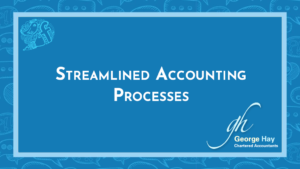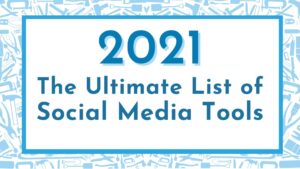This guide will help you write blogs that are not only catered to your audience, but that also use relevant keywords & questions, heading tags and other tricks to boost the SEO impact of your post. We’ve also included a checklist to make sure you write with intent, as well as a number of tools (both free and paid) to help your blog writing efforts.
But, before you get stuck into SEO, make sure all links throughout your website are valid, your navigation offers a friction-free user experience, and your design is mobile-friendly. An easy way to check this final aspect is by using PageSpeed Insights by Google. If the tool picks up a number of issues that are in need of attention, it could be time to call in a web developer for some help.
So, let’s have a look at how you can write SEO-boosting blogs…
Step 1: Pick A Topic For Your Blog
Do you know what you’re going to write about? Maybe not, but you might have an idea and you want to check if it’s good.
Option 1: Explore Google search results – Free
Type the idea in Google search e.g. search engine optimisation. You will see a list of automatically populated search terms appear (as below).
Tip: each time you click on an arrow, it expands showing more results of what people are also asking.

Option 2: Discover what people are looking for on Answerthepublic – Free & paid options
Go to Answerthepublic.com and enter a keyword to explore all the questions and results of what people are asking.
Tip: aim for the dark green, they are the most searched for, and as you only get three free trials per day, use them wisely and take screenshots.

Option 3: Generate writing ideas on SEMrush – Free & paid options
Login to SEMrush (or sign up for a 30-day free trial), go to Topic Research on SEMrush, write an idea e.g. tiktok, go to ‘Cards’, enable ‘Trending Topics First’, and explore the topics and questions in each card.
You will see a + sign on the right of each topic, click it to add it to ‘Favourite Ideas’, then head over to Favorite Ideas and learn more about the ideas you are interested in.
Tip: you want to aim for high volume, low difficulty (up to 70% is okay if your website is not well established), and a high topic efficiency.

Now, what if you have a topic in mind but you want to discover more keywords? You have two options.
Option 1: Download Keyword Everywhere extension – Free & paid options
When you enable the extension, and search using the topic you have in mind in Google, the tool will display a wealth of information for you.
You will get related keywords and what people also search for, which you can then use as keywords in your blog.
Tip: while it’s great to see what people also search for, this doesn’t mean the volume is high enough to necessarily write a blog about it, which is why I recommend to use it along with SEMrush to check the volume of the keywords you’re interested in.

Option 2: Use Keyword Magic Tool in SEMrush to explore questions and search volume – Free & paid options.
Head to the Keyword Magic Tool in SEMrush and write two keywords relating to your topic.
Explore Questions, a mix of All and Broad Match usually show the highest volume of searched keywords.

.
Step 2: Write With Intent
Now that you have a topic in mind, follow this helpful list to write better and with definitive intent for the web:
- Don’t worry too much about using so many keywords in the content. As long as you use the related keyword once in the title, metadata and body, you’ll be fine.
- Write to benefit your audience and not just to rank higher.
- Use as many heading tags (H2 & H3) as you want to breakdown the blog body e.g. H2: how to make Tiktok video. H2: how to brand a Tiktok video. H2: steps to create engaging Tiktok video (these all can be in one blog post as long as they’re relevant)
- Use bullet points whenever you are listing steps, tips, do’s & don’ts, checklists etc. (these usually rank as SERP feature)
- Can you add helpful images, infographics to break down the blog content and clarify something?
Step 3: Upload And Optimise
Now your blog is written, upload it on your website and follow these tips to optimise it for search engines:
- Complete all info needed for SEO: blog & page title, url, metadata and description.
- Page title: optimal title length is 55-60 characters (this can be the same as blog title or a shorter version.
- Meta description: optimal length is 160-250 characters (think how your blog answers the question that users are looking for and what they’ll get from it)
- URL: use the title in the url slug e.g. /how-to-make-tiktok-video
Images Guidelines For Blogs:
- Use web-friendly alt-text for images, lowercase with numbers and hyphens e.g. 5-tips-for-tiktok-video
- File type can be .jpg, .gif or .png
- Image size should be less than 500 KB
- Image dimensions 1500 pixels wide (and about 1000 pixels height)
- Focus on PPI pixels/inches
- the optimal resolution for your image is around 70% (the larger the file the slower the loading)
- Save image as RGB colour mode (if applicable)
Here’s A Basic SEO Checklist By Priority To Rank Better On Google After Your Blog Is Ready To Publish:
- Keyword in URL
- Keyword in Page Title
- Keywords in Metadata Title & Description
- Keywords in Headings (H1, H2, H3…)
- Content readability and quality (lists, bullet points, images, headings, fonts etc)
- Image sizes and Alt-text
Tips To Discover What Type Of Content Is Ranking In The First Page On Google Around Your Topic:
- Go to Google Search
- Type the topic you have in mind
- Notice what has ranked on top. Is it video content, blog, SERP? Who is ranking high, is it a blogger, an agency etc.? what genre of content, is it serious, funny etc?
- Just explore and generate ideas.
.
Was this post helpful? Do you have any questions or did you face any difficulty with one of the steps?
Leave us a comment below or connect with us in our Facebook community group and we’ll be happy to answer any queries you have. If you liked our content, please consider sharing it with your friends and community members!




